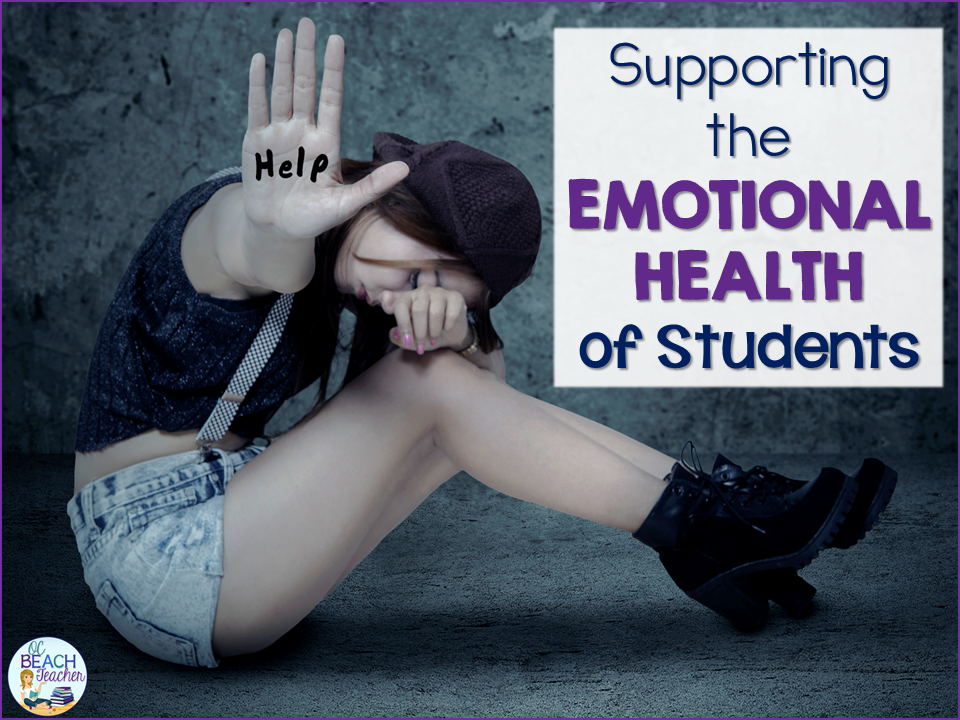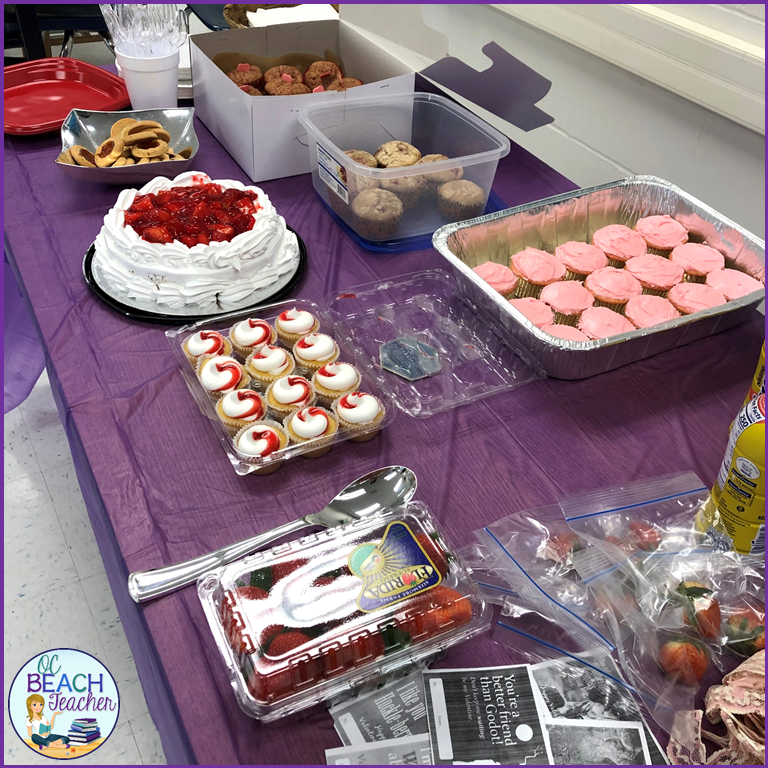We all have difficult times in our lives, but 2020 has been hard for everyone. This year has been filled with challenges such as Covid-19, social unrest and protest, a troublesome economy, and more. No doubt, our students are struggling emotionally because of this turmoil.
Classroom teachers should always be mindful of the impact of emotion on learning but with the current situation in America and around the world, it’s more important to support students’ emotional and mental health than ever. As all teachers know, our work reaches far beyond our curriculums because we are nurturers, and we care for the well-being of our students. Why is this so important?
Emotion affects motivation
One of the main reasons that teachers need to be aware of their students’ emotional health is that it can interfere with their motivation to learn. This spring, when schools changed instruction over to remote learning, many teachers blamed the lack of motivation from their students on their inability to grade students. (This was called “compassionate grading” in my school system.) And while that was certainly true in some cases (students even told me this), many students lacked motivation because of their feelings of depression, fear, and anxiety.
In the article, “The Influences of Emotion on Learning and Memory,” the authors note that “Emotion has a substantial influence on the cognitive processes in humans, including perception, attention, learning, memory, reasoning, and problem-solving. Emotion has a particularly strong influence on attention…(and) motivating action and behavior.” With this in mind, how can teachers adapt their instruction to support students?
Make learning memorable
Research shows that emotional events are remembered more clearly and accurately than neutral events.
- Connect real-world topics to your lessons: What happens outside of the class is as important as what happens in the class. Whenever possible, I include discussions and activities such as these Back to School TED Talks that are related to current issues. Furthermore, Dan Levy, a senior lecturer from the Harvard Kennedy School, says he may cover less content so that he can modify instruction for real life, and he knows his students will better understand the material. “It’s not about me. It’s about the learners. It’s as simple as that.” For teachers, this means we must prioritize the most important content. I often remind myself that it’s most important to teach an “inch wide and a mile deep.” If I’ve already taught a standard, then I likely won’t need to teach it again. This may prevent students from feeling overwhelmed.
- Add Humor: Have you noticed how much a little humor can engage students? Think of some of your favorite speeches, television shows, and movies, and you’ll most likely notice that they make you laugh. It’s a great way to “hook” your students and help them look forward to their learning. Even though I’m not always good at making jokes, I like to add video clips that help my students laugh. Sometimes, I end the week with Fun Friday Videos such as the parody from the Holderness Family.
- Enhance instruction with exploration: Students are motivated by their curiosity and by choice. Whether this is through lessons that use inquiry activities like this one for The Great Gatsby, project-based learning, or choice boards, feelings of suspense and empowerment encourage them to take ownership of their learning. This, in turn, helps improve their confidence. For remote teaching and learning, this is essential.
- Create positive associations: We’ve all probably taken classes that felt boring- sadly, sometimes even with the material we used to enjoy. Unfortunately, as educators have increased rigor, learning has frequently become tedious; however, teachers can make learning both challenging and exciting, sometimes incorporating celebrations. For instance, my students work hard at reading, annotating, and discussing the novel Snow Falling on Cedars in my AP English Literature and Composition course, but like the characters in the book, we also enjoy a strawberry festival. During our reading of The Great Gatsby and To Kill a Mockingbird, we’ve celebrated our completion of the novels with a roaring 20’s party and a tea party. These were in-class activities, but now it’s up to teachers to find ways to do these celebrations virtually. It’s okay for us to make learning joyous! I love this activity where students staged photos of their reading that was posted in one of my teacher social media groups.
Teach coping strategies
Teachers routinely become counselors and surrogate parents to their students; they spend more time with their students than many other adults in their lives. Consequently, we can help them handle their stress by encouraging healthy activities.
As parents and educators know, many students suffer from test anxiety, and apprehension from “normal” school activities becomes worse with the threat of illness and death from Covid-19 to students, their family members, and their friends. This stress can lead students to make poor choices in regards to drugs or alcohol. It can also increase the incidence and severity of mental health illness.
- Practice deep breathing: Research shows that deep breathing techniques help reduce stress. In the journal, Scientific American, author Christophe Andre explains that “deep breathing increases the activity of the vagus nerve, a part of parasympathetic nervous system…When the vagus nerve is stimulated, calmness pervades the body: the heart rate slows and becomes regular; blood pressure decreases; muscles relax.” Clearly, it’s important for students to understand that their physiology affects their emotional state. I’ve been known to use the Calm app for a meditation exercise before standardized assessments.
- Incorporate Physical Activity: Again, it’s crucial for students to understand the mind and body connection. Doctors and scientists have frequently discussed the benefits of exercise and movement. Exercise reduces fatigue and improves concentration. As explained in an online article by the Anxiety and Depression Association of America, “Exercise and other physical activity produce endorphins—chemicals in the brain that act as natural painkillers—and also improve the ability to sleep, which in turn reduces stress.” Studies show that physical activity can improve sleep and concentration. Physical activity may be harder to incorporate during online learning or while social distancing, but I’ve encouraged students to take writing walks and find other ways to get routine exercise.
- Inspire Positive Self-Talk: Many people are their own worst critics and teachers can help students to “talk” to themselves in kinder and more reassuring ways. It’s important because our inner voices affect how we think and feel. Teachers can encourage students to use positive self-talk by modeling it with themselves, creating positive self-talk statements, and helping students change negative thoughts to positive statements. For instance, if a student says he/she was “lucky” to score well on a test, tell them that they did well because of their good study habits.
Of course, if teachers are concerned that individual students may need additional support, it’s always important to reach out to a child’s parents and to school counselors. Be sure to take care of your own emotional health as well! These strategies may help you avoid burnout during distance learning.
Finally, in addition to making learning a positive experience and helping students learn coping strategies, teachers can improve their students’ emotional health by building community in their classes. This reduces social isolation, prompts feelings of belonging, and develops a safe and supportive environment for learning. In the classroom, I frequently employ cooperative learning and am considering using virtual discussions, Zoom, and classmate connections for online instruction. I’m looking forward to finding new ways for students to connect in a virtual environment. Do you have suggestions? Please share your ideas in the comments below.

Works Cited
André, Christophe. “Proper Breathing Brings Better Health.” Scientific American, Scientific American, 15 Jan. 2019, www.scientificamerican.com/article/proper-breathing-brings-better-health/.
Hough, Lory. “Making Learning Memorable.” Harvard Graduate School of Education, 3 Mar. 2015, www.gse.harvard.edu/news/uk/15/03/making-learning-memorable.
“Mental Health and Coping During COVID-19.” Centers for Disease Control and Prevention, Centers for Disease Control and Prevention, 30 Apr. 2020, www.cdc.gov/coronavirus/2019-ncov/daily-life-coping/managing-stress-anxiety.html.
“Physical Activity Reduces Stress.” Anxiety and Depression Association of America, ADAA, 2018, adaa.org/understanding-anxiety/related-illnesses/other-related-conditions/stress/physical-activity-reduces-st.
Pragholapati, Andria. “COVID-19 IMPACT ON STUDENTS.” EdArXiv, 11 May 2020. Web
Tyng, et al. “The Influences of Emotion on Learning and Memory.” Frontiers, Frontiers, 10 Aug. 2017, www.frontiersin.org/articles/10.3389/fpsyg.2017.




